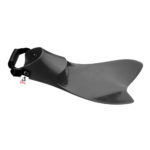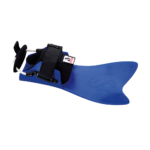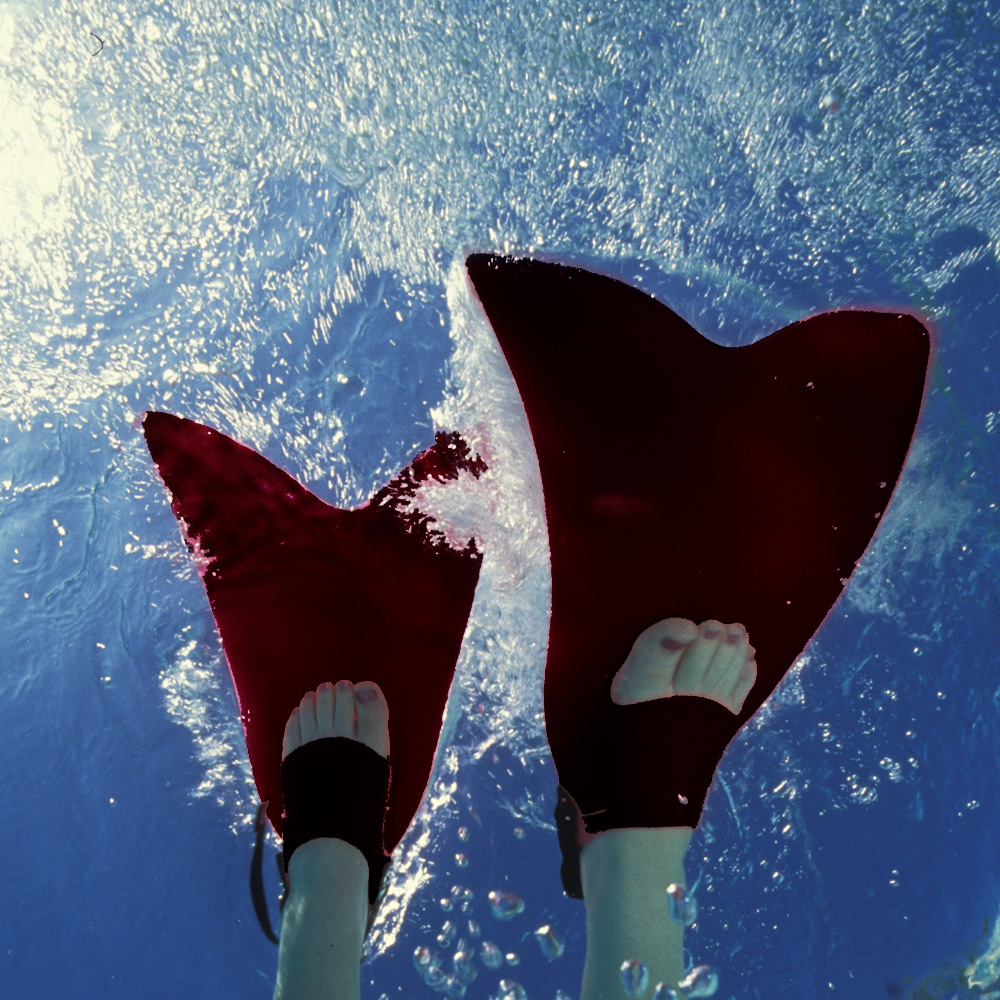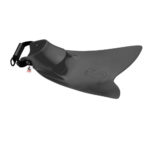Have you ever noticed that runners, cyclists or triathletes new to swimming who start a serious swim program have a hard time just kicking and going anywhere? In fact, they sometimes go backward! One reason is that their ankles are so inflexible that when they kick, their feet act like hooks, catching the water and pulling the frustrated swimmer in the wrong direction.
Good swimmers, on the other hand, can hyper-extend (plantar flex) their ankles, pointing their toes so that the top of the foot forms a straight line with the shin. Because of the extra load from the increased surface area that fins provide, swimming or kicking with fins forces ankle extension during the power phase (pushing down when swimming freestyle) of the kick. Repeated fin use eventually stretches the ankles, increasing their flexibility for moving in all directions and helping the kick become more propulsive and efficient.
Ankle flexibility is one key to efficient kicking.
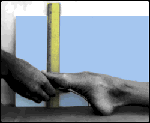 To measure your flexibility, sit on the floor with legs extended and place a stiff piece of paper against the side of the foot. With heels touching the floor, point your toes as far forward as you can while having someone trace this side view.
To measure your flexibility, sit on the floor with legs extended and place a stiff piece of paper against the side of the foot. With heels touching the floor, point your toes as far forward as you can while having someone trace this side view.
Measure the distance from the base of your big toe to the ground or floor; your goal should be from one to four inches.
Using a regular program of kicking with FORCE FIN swimming fins, re-measure and chart your progress.
The extra load from the increased surface area that fins provide, swimming or kicking with fins forces ankle extension during the power phase (pushing down when swimming freestyle) of the kick. Repeated fin use eventually stretches the ankles, increasing their flexibility for moving in all directions and helping the kick become more propulsive and efficient.
